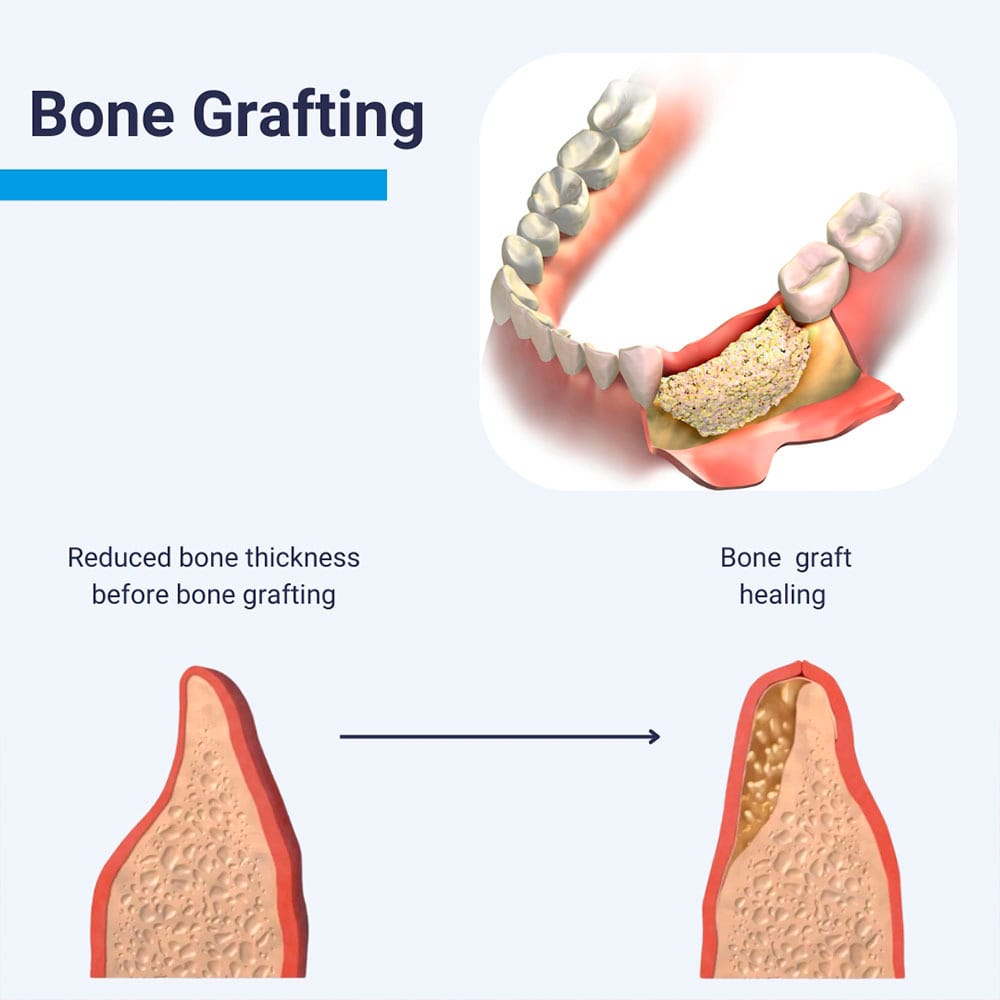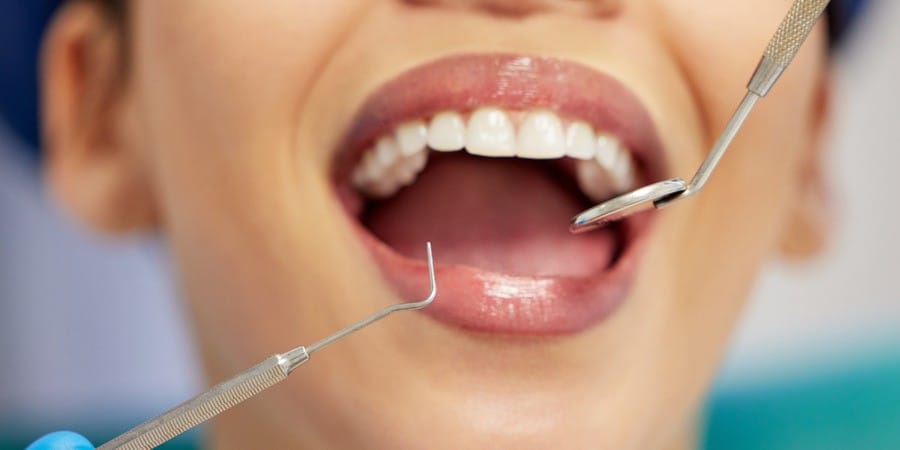What Is a Bone Graft?
A dental bone graft is a surgical procedure that helps increase the density and volume of your jawbone. The bone graft helps provide a matrix or scaffold, holding the correct amount of space in your jawbone and encouraging your body to produce new bone tissue that will eventually replace the graft.

Various types of bone grafting material can be used, including the following:
Allograft
An allograft is human bone from a donor bank. The bone is extensively tested and sterilized to ensure it is safe for use.
Alloplast
An alloplast is an artificial bone grafting material. It contains minerals such as hydroxyapatite and may have growth factors to encourage new bone formation.
Autogenous
An autogenous bone graft is your own bone, so we would take a small section of bone from another area in your body and graft it into place. Using your own bone can be highly successful, but it does mean another dental bone graft surgery is needed to remove the dental bone graft.
Xenograft
A xenograft is animal bone, usually bovine or porcine, and is from a donor bank. Like an allograft, a xenograft is extensively tested and sterilized to ensure your safety.
When Is Bone Grafting Necessary?
There are various situations when we might suggest a dental bone graft. These include the following.
- Socket preservation is when we fill an empty tooth socket with bone grafting material after extraction.
- Ridge augmentation is used to increase the volume and width of your jawbone.
- To prepare your jawbone for dentures.
- Stabilizing loose teeth.
- Replacing bone that has been destroyed due to trauma or gum disease.
- Increasing the amount of bone nearest your sinus cavities. You may need this procedure if you intend to have dental implants to replace your upper back teeth.
A dental bone graft is a common procedure we routinely complete at Clock Tower Dental. We use the highest quality materials and the latest bone grafting techniques to ensure a more successful treatment.
How Will I Know If I Need a Bone Graft?
When you visit our dental office, we can assess your jawbone closely using a cone beam CT scan. This is a 3-D scan of your jaws and any existing teeth and is entirely painless. Our team at Clock Tower Dental provides a comprehensive range of services to ensure your oral health, including advanced diagnostic tools like the cone beam CT scan, so we can create the best treatment plan for you.
The 3-D images allow us to identify areas where your jawbone is missing or naturally thinner and assess how much bone grafting material will be needed during your treatment.
At this point, we will also review your dental and medical history. It’s important to ensure you are suitable for dental bone grafting and that this procedure will be as safe and successful as possible.
What to Expect During a Dental Bone Grafting Procedure
Your dental bone graft surgery will depend on the graft size and where it is required. Below is a general idea of what to expect during your treatment.
- Before we begin, we will numb your gums with a local anesthetic. You can also choose to have sedation dentistry to ensure you feel comfortable and relaxed.
- A small incision is made into your gum so we can gently move the gum away from your jawbone.
- The bone grafting area is cleaned and disinfected before we add bone grafting material.
- The bone graft is covered with a membrane to protect it and prevent gum tissue from growing into the area.
- Your gums are repositioned and stitched shut.
Is Bone Grafting Painful?
This is a minor procedure, and pain from any dental bone graft should be minimal. Many people experience little or no pain or discomfort. If we have prescribed medication, please take it as directed and follow our after-care instructions closely to ensure healing is quicker and smoother.
Recovery after Bone Grafting
The recovery time depends on the bone graft size, but it generally takes around a week. You may experience some minor swelling and bruising, which is perfectly normal.
You might also notice some small fragments of bone grafting material emerging from the surgery site. It’s perfectly normal to see some fragments, but if you feel concerned, please get in touch with us for further advice and help.
We will provide comprehensive post-operative instructions before you leave our dental office, but some general guidelines are below.
- Use ice packs wrapped in a towel and applied to the outside jaw to reduce swelling.
- Keep your head elevated to help reduce swelling.
- Choose softer foods for the first few days and avoid anything hard or crunchy that could get stuck in the surgery site.
- If we have prescribed medications, please take them as directed.
- Avoid touching the surgery site.
- Avoid strenuous exercise for at least 48 hours after surgery.
- Avoid drinking any alcohol for two weeks afterward.
- Please don’t smoke or vape during recovery and healing.
- Don’t swish liquids vigorously around your mouth or spit.
It will take several months for the bone graft to heal. Larger bone grafts may take up to a year to heal completely.
Are There Any Potential Risks or Complications?
Dental bone graft complications are rare, but there is always a small possibility of risk or failure during any surgical procedure.
Potential risks can include:
- Infection
- Nerve damage
- Prolonged bleeding
- Complications from the anesthetic
It is very unlikely that your dental bone graft will fail, but this can happen if you are a smoker or have certain medical conditions. We will assess your medical history carefully before recommending you for this treatment.
Signs of failure can include:
- Swelling or pain that gradually gets worse instead of better
- Pus buildup around the bone grafting site
- Receding gums
- No increase in jawbone volume
Our team is always here to help you and provide information over the phone, so please get in touch with us if you are concerned about your bone graft. Our periodontics specialists can address any concerns and provide expert guidance on the health of your gums and bone structure, ensuring that your treatment goes smoothly and delivers lasting results.

